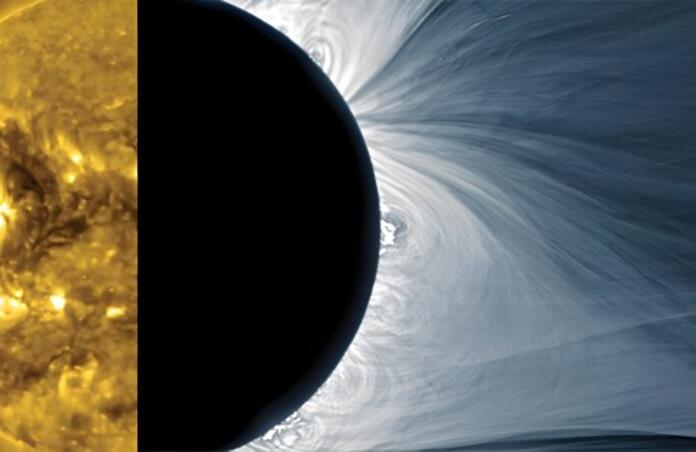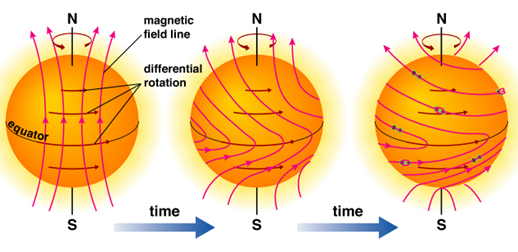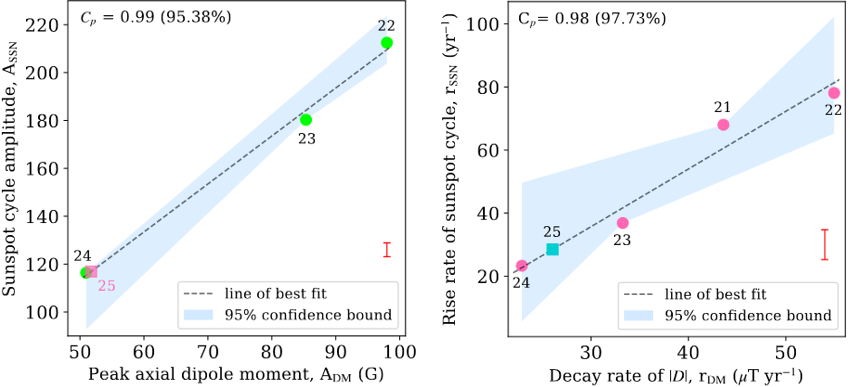New Models Anticipate Next Sunspot Cycle to Begin Next Year

At its most basic the Sun, and other stars, act as large dipoles. This is thought to be the due a dynamic process, known as the solar dynamo effect, where charged particles moving in the Sun's plasma interior induce a 'poloidal' magnetic field, arcing between the solar north and south poles. These hence also act as the star's magnetic poles. Differential rotation of the stellar surface applies shear forces to the plasma, twisting the poloidal magnetic fields into 'toroidal' fields. These toroidal fields, when they rise to the solar surface, suppress the convective transport of heat at their emergence and re-entry points, creating cooler, darker regions known as sunspots.
Another part of the dynamo process involves the recycling and reintegration of toroidal fields into the poloidal field, which results in magnetic field components in opposition to the original direction. Over time, about every 11 years, this opposing field will dominate, causing the polarity of the star to flip. As such, from the beginning of a cycle, we observe the weakening of the poloidal field in one direction, until the opposing field can dominate.

Credit: Addison Wesley
It should also be noted that in 1755, a nomenclature was adopted to number sunspot cycles in order. Currently, we are within cycle 25. The last time the magnetic field flipped was in 2012-2013, during the peak of cycle 24. Hence, at a cursory glance, we anticipate the beginning of the next cycle quite soon.
A recent study by Priyash Jaswal et al discusses the causal relationship between the rate of sunspot formation and the strength of the poloidal magnetic field. This discovery acts as an extension of the pre-existing Waldmeier effect, where it has been observed that cycles where sunspots appear to form more quickly will result in more total sunspots during that cycle. Their analysis presents methods to predict the timing of future solar cycles, and hence the intensity of solar activity.

The study leverages archival sunspot and solar magnetic field data, together with existing mathematical models to construct a time varying plot of the Sun’s magnetic dipole moment. They studied the relationship between the decay rate of visible sunspots against the rise in the dipole moment, during various sunspot cycles. The study identified a 98% correlation between the two phenomena, allowing for empirical predictions of future cycles. Based on this, the team concludes the next peak in the cycle, and hence solar activity, will be next year, 2024 (+0.68,-0.49 yr). Additionally, it appears that cycle 25 will be a weak to moderate intensity cycle.
The study by Priyash Jaswal et al. marks a significant advancement in understanding solar dynamics, presenting a robust correlation between the decay rate of the Sun's dipole moment and the subsequent sunspot cycle's intensity. Their empirical methodology offers a novel approach to predicting future solar activity peaks and promises to enhance the reliability of space weather forecasting. These methods could prove pivotal for many vital technologies, such as protecting in-orbit satellite operations, and terrestrial radio communications.
--
Cover Image: M. Druckmüller et Al / Contrib Astron Obs S 2006
Journal Source: Priyansh Jaswal et al, Discovery of a relation between the decay rate of the Sun's magnetic dipole and the growth rate of the following sunspot cycle: a new precursor for solar cycle prediction, Notices of the Royal Astronomical Society: Letters, Vol. 528, No.1, 2023, DOI: 10.1093/mnrasl/slad122
